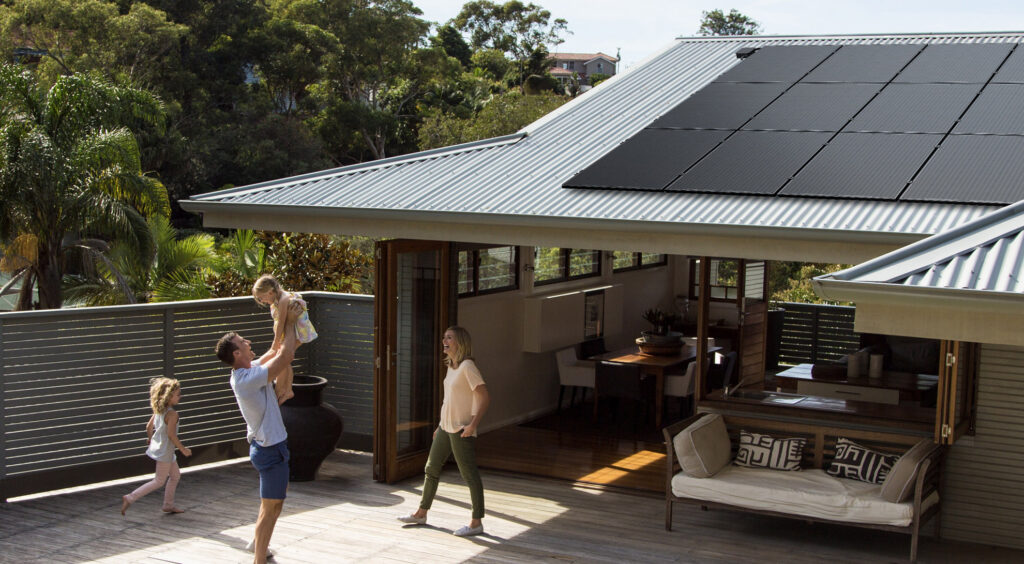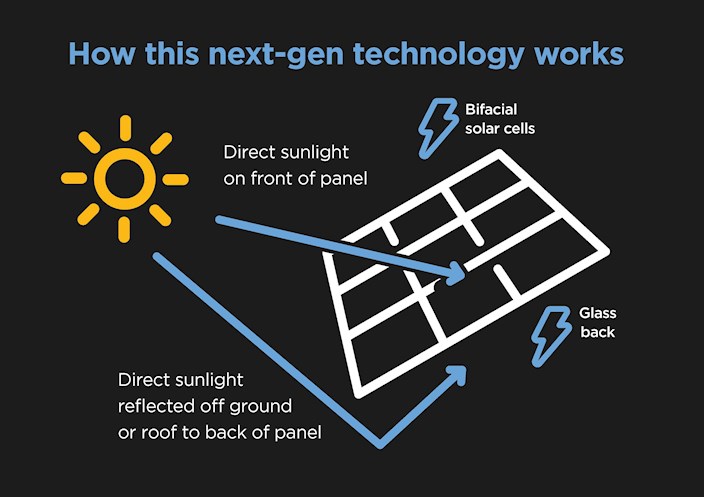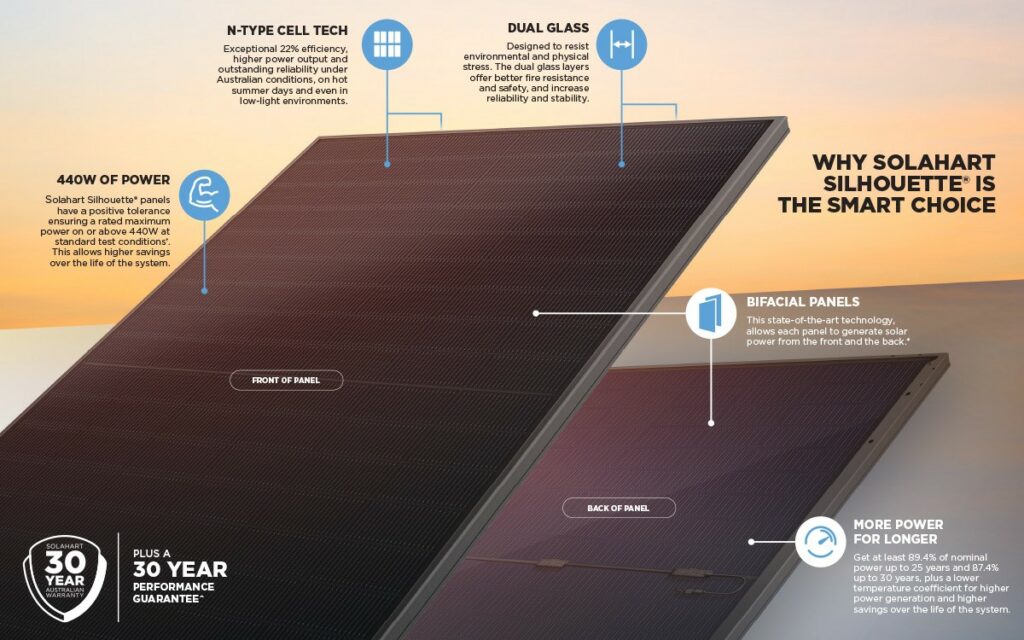Solar panels are becoming more popular and affordable in Australia as homeowners and businesses constantly look to reduce their electricity bills and carbon footprint. However, not all solar panels are created equal. Depending on their design, technology, and performance, some offer more advantages.
One of the latest innovations in the industry is the all-black bifacial solar panel, a type of dual-glass panel that uses n-type cells and can generate power from both sides of the module. N-type cells are made of high-purity silicon and have more power, efficiency, and lower degradation rates than previous cell technologies.
This article will explain bifacial solar panels, how they work, and why they are a smart choice for residential applications in Australia.
Bifacial panels are solar modules with a black frame, designed to present a sleek, smart look on roofs. They are covered with tempered glass on both sides to resist environmental and physical stress, such as dust and moisture. The dual glass layers also offer better fire resistance and safety, as well as increased reliability and stability.

Bifacial solar panels work similarly to conventional panels but with some differences. The most distinctive feature is that they can produce energy from both the front and back sides of the module, increasing the total power output.
The front of the panel is hit by direct sunlight, while the back side receives the diffused or reflected sunlight from the roof, ground, or other nearby surfaces and converts it into additional power. This is called the bifacial gain, which can range from 0% to 25%, depending on the installation conditions and reflectivity of the surroundings.¹
The amount of power generated by the back side depends on several factors, such as:
The following illustration explains how bifacial solar panels work.


Bifacial solar panels represent a significant advancement in solar technology, providing higher efficiency, greater durability, and enhanced energy production than traditional monofacial panels. For Australian homeowners looking to maximise their solar investment, bifacial panels offer a smart and future-proof solution. With the ability to generate power from both sides, these panels can optimise energy output, making them an excellent choice for reducing electricity bills and contributing to a sustainable future.
Investing in bifacial solar panels can lead to substantial long-term savings, a reduced carbon footprint, and contribute to a greener and cleaner future, aligning with Australia’s growing trend of eco-conscious living.